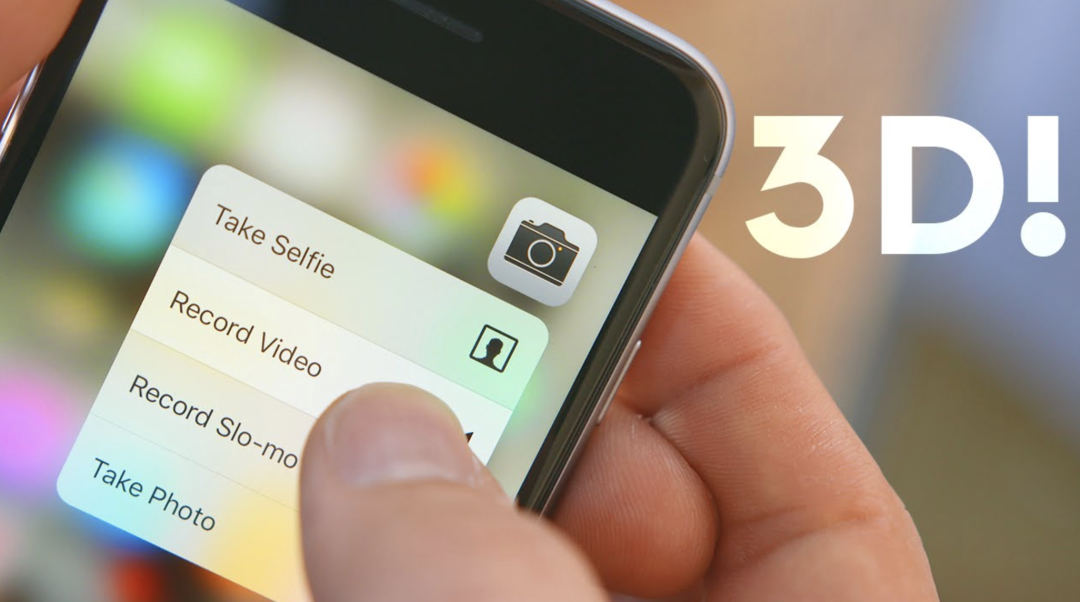3D Touch returned to the public eye, and Guofen asked: Why did Apple abandon it?
Editor’s note: This article is from the micro-channel public number “Ray Technology” (ID: leitech), Author: TSknight.
From its release in 2015 to the launch of the last generation of iPhones equipped with this feature in 2018, 3D Touch was abandoned by Apple in just three years and replaced by Haptic Touch. What’s interesting is that after 3 years, this feature that has been forgotten by most people rushed to the hot search again.
In the hot search of #原iPhone可以称重#, a blogger shared how to use iPhone 6s to weigh small objects such as fruits and snacks. Many fruit fans were amazed. It turns out that the iPhone can still do the same. play? Afterwards, many fruit fans began to use 3D Touch to popularize science, which attracted more fruit fans’ curiosity: why is such a useful function abandoned by Apple?
Why is 3D Touch so memorable?
Although 3D Touch has been excluded from the basic functions of the iPhone, it is one of the features that many fans want to return, because when users get used to 3D Touch, they will find that the experience of Haptic Touch is far inferior to the former. of. For example, a very common scenario: switching APPs. In iPhones that support 3D Touch, you only need to press the edge of the phone and slide to switch APPs directly. Before the emergence of the full-screen gesture function, the user’s operation process for switching APPs was effectively reduced.
In addition, many game developers also integrate 3D Touch into the game operation. Take PUBG Mobile as an example. You only need to “re-press” anywhere on the screen to directly trigger the fire. The experience is quite good, and some are keen on Players of mobile FPS games think that the iPhone equipped with 3D Touch is the most comfortable gaming phone. Obviously, Haptic Touch cannot easily provide the same experience.
For heavy social software enthusiasts, the preview function of 3D Touch is irreplaceable by Haptic Touch in experience. For example, when you see a picture on Weibo, you can zoom in and preview by “re-pressing” at this time. If you release your hand, it will automatically zoom out so that the user can continue to slide to view other information. It will automatically enter the detailed page, bringing a smooth refreshing experience.
To put it simply, 3D Touch can simplify the operation that originally required 2-3 clicks to complete into an operation that can be completed by 1 re-press + slide/release, which can significantly increase the user’s daily use. Experience fluency. Therefore, although Haptic Touch can restore most of the functions of 3D Touch, especially the 1-2 second waiting time required for a long press, it also makes the user’s continuous operation fragmented, and it is difficult to match the former in terms of user experience.
In addition to providing users with a smoother experience in daily use, 3D Touch has also received attention from developers, and many developers have tried to apply 3D Touch to different purposes. For example, the electronic scale function that sent it to Hot Search this time comes from an APP called “TouchScale”, which is equivalent to a portable electronic scale for users who want to control their dietary intake. In addition, Bandit’s Shark Showdown, developed by a team at Johns Hopkins University, can help stroke patients in need of rehabilitation.
It can be seen that 3D Touch as a function has a very broad prospect and application range, but everything ends with the release of the iPhone 11 series.
Why is 3D Touch abandoned?
After the launch of 3D Touch, it has indeed attracted the attention of many users, but more iPhone users actually did not pay attention to new product launches and new features, which caused the existence of this feature to be very embarrassing and even attracted some new iPhone user’s question: Why can’t I open the app when I click on the icon?It, but pressed out a menu?
As a hidden auxiliary function, users often need to find out which applications and UI support 3D Touch by themselves. Because of this, 3D Touch is basically only a user who pays close attention to iPhone function updates in the early stage and throughout its life. Know it and know how to use it. To use a Chinese proverb, it is: The smell of wine is also afraid of deep alleys. A function that most people don’t know and don’t use is a “useless” function for Apple.
Moreover, there are not many defects in 3D Touch. First of all, there is a certain possibility of false touch. On the contrary, it adds additional operation steps for users and causes confusion for users who do not understand the function. Secondly, the force-sensing module has further increased the cost of the screen, while also bringing about problems such as increased body thickness and module conflicts.
Especially after the iPhone adopts a new design, due to battery capacity, screen, cost and other considerations, in the end Apple can only choose to abandon 3D Touch and use long-press operations to achieve secondary menu call out and other functions. Haptic Touch. The abandonment of 3D Touch is not simply because it is easy to use or not easy to use, but the result of multiple issues such as hardware cost, design, and utilization, which ultimately makes it one of the shortest-lived features.
Conclusion
In my opinion, 3D Touch can be regarded as a rare innovation among the practical functions updated by Apple in the past. However, due to various reasons, it was eventually eliminated by Apple from the iPhone. Sigh. However, in Apple’s software ecosystem, there are not many functions that have the same fate as 3D Touch. After all, as a commercial company, profitability is always the first thing to consider.
So, although many users miss 3D Touch, it is not enough for Apple to become the driving force for the re-development of 3D Touch, and even the 3D Touch function was cancelled on the subsequent Apple Watch 6. The history that has happened is repeating itself, and users have nothing to do with it. From the headphone jack to the 3D Touch to the charger, Apple is gradually narrowing the user’s power of choice. It can’t help but make people wonder, where will Apple move the knife next time?






